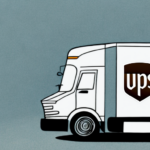Shipping Large Packages Over 165 Inches: What You Need to Know
Shipping large packages can be a daunting task. Not only is it more challenging to handle packages that exceed standard sizes, but there are also unique challenges that come with transporting such items. In this article, we'll explore what you need to know about shipping packages over 165 inches in length. From understanding the dimensions of large packages to dealing with lost packages, we'll cover every essential aspect of shipping large packages in exhaustive detail.
Understanding the Dimensions of Large Packages
Before you ship a large package, it's essential to understand what qualifies as "large." Generally, any package exceeding 165 inches in length, width, or height is considered large. However, different shipping carriers may have their own specific guidelines on what constitutes a large package.
Accurate measurement is crucial to avoid surprises during the shipping process. When measuring, include any pallets, skids, or crates used to hold the item. Precise measurements also help calculate the correct shipping costs.
Weight is another important factor when shipping large packages. Most carriers have weight limits, and exceeding these can result in additional fees or even package rejection. Ensure your package is weighed accurately and choose an appropriate shipping method based on its weight and dimensions. Some carriers may also require special handling or equipment for packages over a certain weight, so it's important to check with your carrier for specific requirements.
Choosing the Right Shipping Method for Large Packages
Selecting the right shipping method is critical when dealing with large packages. Different carriers handle large packages differently, so it's essential to review their guidelines on transporting oversized items. Some carriers may impose additional fees or surcharges for handling large packages, while others may not offer large-package shipping at all.
Freight shipping is a suitable option for large packages. Freight carriers often specialize in handling oversized shipments, offering specialized equipment like flatbed trailers and accommodating shipments that exceed the size and weight limits of standard parcel carriers.
Delivery time is another important consideration. Some carriers may offer faster delivery options for large packages, while others may take longer due to the package's size and weight. Check the estimated delivery times for each carrier to choose the one that best fits your needs.
Proper packaging is essential to ensure your large package arrives safely. Use sturdy boxes, protective materials like bubble wrap or foam, and secure the package with strong tape. Clearly label the package with accurate shipping information, including the recipient's address and contact details, to avoid delivery delays or errors.
Common Challenges in Shipping Large Packages
Shipping large packages comes with its own set of challenges, including higher costs and increased complexity. Key challenges include:
- Packaging: Large items often require pallets or crates to secure the contents.
- Handling: Specialized equipment is needed to move oversized packages safely.
- Transportation: Ensuring the package is transported without damage requires careful planning and execution.
Some carriers may restrict the types of packaging materials used for large packages for safety reasons or to prevent damage to other shipments. Always check your carrier's packaging guidelines to avoid delays or shipment issues.
International shipments introduce additional challenges, such as customs clearance delays. Ensure all necessary documentation is accurate and complete to minimize delays and extra costs associated with customs inspections.
Tips for Packing and Securing Large Packages
Proper packing and securing of large packages are crucial to ensure safe and damage-free transportation. Here are some tips to help you pack and secure your large packages:
- Use sturdy packaging materials that can withstand the weight and size of the package.
- Wrap items securely in bubble wrap or other protective materials to prevent damage during transit.
- Use pallets or crates to prevent shifting during transportation.
- Secure the items tightly to avoid damage during handling and transportation.
- Add labels indicating the orientation and positioning of the items inside.
Additionally, use clear and visible labels that state the package's contents and any handling instructions or warnings. Proper labeling ensures that your package is handled with care and reduces the risk of damage or mishandling during shipping.
Finding a Reliable Shipping Company for Large Packages
Choosing a reliable shipping company is essential to ensure the safe delivery of your large packages. Look for providers with a strong track record in handling oversized shipments and offering competitive rates. Consider the following when selecting a shipping company:
- Check references and reviews to gauge the company's reliability and service quality.
- Ensure the company offers insurance coverage for your package.
- Verify the company's service areas to confirm they ship to your intended destination.
- Obtain quotes from multiple carriers to compare services and find the best fit for your needs.
Understanding the Costs of Shipping Large Packages
Shipping large packages is generally more expensive than shipping smaller or standard-sized packages. Several factors influence the cost, including:
- Size and weight: Larger and heavier packages incur higher shipping costs.
- Fragility: Fragile items may require additional packaging and careful handling, increasing costs.
- Destination: Long-distance or international shipments typically cost more.
Some carriers also charge additional fees or surcharges for handling large packages. Freight shipping can be a cost-effective option, especially for heavy and bulky items, as you may benefit from bulk rates based on the total weight of the shipment rather than individual package weights.
How to Track Your Large Package During Shipping
Most shipping carriers offer package tracking services that allow you to monitor the status of your large package in real-time. To effectively track your shipment:
- Obtain the tracking number provided by your carrier.
- Regularly check the tracking updates to monitor your package's progress.
Tracking your shipment helps you stay informed about any delays or issues, allowing you to make necessary preparations for receiving the package upon its arrival.
Dealing with Damaged or Lost Large Packages
Despite careful planning, packages can sometimes be damaged or lost during shipping. To mitigate these risks:
- Ensure you have adequate insurance coverage for your shipment. Most carriers offer basic insurance, but you may need to purchase additional coverage for high-value items.
- If your package is damaged or lost, file a claim with your carrier immediately. Provide detailed information about the package and its contents, including photos, receipts, and other supporting documentation.
Promptly addressing issues with your carrier increases the likelihood of a successful resolution and compensation for any losses.
Legal Requirements for Shipping Large Packages
Shipping large packages involves adhering to specific legal requirements. Key considerations include:
- Some carriers have restrictions on certain items or materials that cannot be shipped.
- Special packing and labeling requirements may apply for hazardous materials.
Always review the carrier's regulations carefully to avoid legal issues during the shipping process. Compliance with all applicable laws and regulations helps prevent fines and legal complications.
International Shipping of Large Packages: What You Need to Know
International shipping of large packages introduces additional complexities, including varying regulations and requirements compared to domestic shipping. Factors to consider:
- Import duties and taxes: These can affect the total cost of your shipment.
- Customs clearance: Ensure all necessary documentation is accurate and complete to avoid delays.
Research the regulations, requirements, and fees of the destination country before shipping your large package overseas. Consider using a freight forwarder to navigate the complexities of global shipping effectively.
How to Save Money on Shipping Large Packages
Shipping large packages can be expensive, but there are ways to reduce costs:
- Research to find the most cost-effective shipping carrier.
- Choose freight shipping for better rates on heavy and bulky items.
- Consolidate multiple packages into a single shipment to benefit from bulk rates.
- Use packaging materials that are both safe and cost-effective.
Best Practices for Receiving and Unpacking Large Packages
Properly receiving and unpacking large packages is essential to prevent injury and avoid damage to the items inside. Follow these best practices:
- Ensure package handlers have the necessary tools and equipment for safe movement.
- Prepare the receiving area by clearing obstacles and creating an open path to the destination.
- Use proper lifting techniques to prevent back injuries.
- Measure doorways, hallways, and other areas where the package will pass through.
- Unpack carefully and follow the manufacturer's guidelines for assembly and installation.
Advantages and Disadvantages of Using Freight Forwarders for Shipping Large Packages
Freight forwarders can be an excellent option for shipping large packages, especially for international shipments. However, they come with their own set of advantages and disadvantages:
Advantages:
- Consolidated shipments can result in lower per-unit shipping costs.
- Expertise in navigating customs procedures and regulations reduces the likelihood of delays.
- Comprehensive services, such as documentation preparation and cargo insurance, enhance convenience.
Disadvantages:
- Freight forwarders may add significant markup fees on top of shipping costs.
- Additional communication and coordination can slow down the shipping process.
- Freight forwarders may lack the same level of accountability and responsibility as shipping carriers, complicating issue resolution.
Conclusion: Ensuring Safe and Smooth Delivery of Your Large Package
Shipping large packages presents unique challenges, but with proper preparation and understanding, you can ensure a smooth and safe delivery. Key steps include accurate measurement and packaging, selecting the appropriate shipping method, and regularly tracking your shipment's progress.
Understanding the costs and legal regulations associated with large package shipping helps you save money and remain compliant with all requirements. Properly receiving, unpacking, and assembling your package prevents injuries and damage to your items.
Researching carrier and freight forwarder reputations, obtaining adequate insurance coverage, and knowing how to file claims in case of lost or damaged packages are essential practices. By following these guidelines, you can achieve a safe and secure delivery of your large package.






















